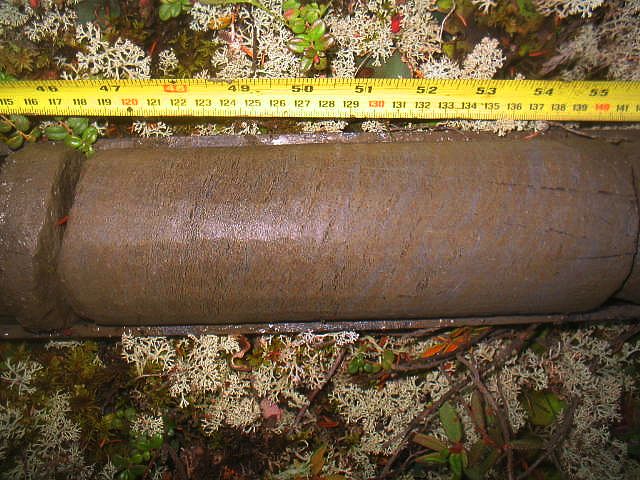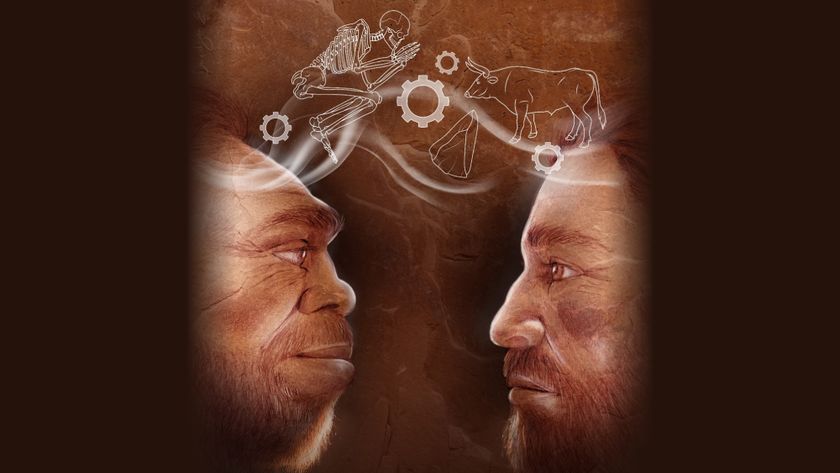Frozen Microscopic Worlds Come Alive as Earth Warms

As our planet warms, a world locked in permafrost will come alive, and researchers worry the tiny inhabitants of the frozen soil will start churning out greenhouse gases, magnifying global warming.
"Nobody has looked at what happens to microbes when the permafrost thaws," said Janet Jansson, a senior staff scientist at Lawrence Berkeley National Laboratory in California. She led a study that recorded what happened when chunks of Alaskan permafrost thawed for the first time in 1,200 years.
"We now have a picture, there wasn't really one before," said Jansson, who along with her colleagues sequenced the genetic material of microbes within frozen and thawed permafrost. Along the way, they also discovered a new-to-science microbe and sequenced its entire genetic blueprint or genome.
Permafrost is pretty much what it sounds like — soil that has been frozen for thousands or even hundreds of thousands of years — and it is packed with the dead plants and other once-living things present when the permafrost formed. Rising global temperatures thaw this organic matter, allowing microbes to begin breaking it down. In the process, they release greenhouse gases containing carbon. Scientists are particularly worried this process could pump a great deal of methane, which contains carbon and is a potent world warmer, into the atmosphere.
Because there is a lot of carbon tucked away in the permafrost, scientists have feared the melting it could aggravate global warming. Arctic permafrost, for example, is estimated to contain more than 250 times the greenhouse gas emissions from the United States in 2009.
Methane munchers
To figure out how microbes would respond in a warming world, the researchers used samples of permafrost as well as the icy layer above it, which thaws in summer and is considered the "active layer," at Hess Creek, Alaska. [Stunning Photos of Antarctic Ice]
Sign up for the Live Science daily newsletter now
Get the world’s most fascinating discoveries delivered straight to your inbox.
The researchers then sequenced the DNA contained in the two permafrost samples, an approach known as metagenomics. They then kept samples at 41 degrees Fahrenheit (5 degrees Celsius), which thawed them. They examined the genetic contents again two days later and seven days later. They also measured the concentration of the gases emitted by the samples.
They saw an initial burst of methane after two days. After seven days, the methane concentration had decreased significantly. The samples also emitted increasing amounts of carbon dioxide; unlike methane, it did not drop off.
Using the genetic evidence, the researchers were able to see how the bacterial communities in the samples compared to one another and to the active layer, and how they changed over time.
They found DNA representative of methane-producing bacteria present throughout the study. But the genetic evidence they found in the samples echoed the fall of methane. After two days, methane-eating microbes began to increase, and continued to do so up to seven days.
It is possible that methane-eating bacteria might somewhat offset the methane produced by their counterparts if the permafrost melts on a larger scale, Jansson said. "It will completely depend on the particular environmental scenario during the thaw."
Factors like the speed of the thaw and the amount of the organic matter in the soil will influence this dynamic, she said. From the data, it wasn't clear if anything was removing the carbon dioxide.
At first, when frozen, the communities of microorganisms in the two samples differed considerably, even though they had come out of the ground 9.8 feet (3 meters) apart. But over the following week, the microbe community profiles from each sample became more similar to each other, and both came to resemble that of the active layer.
"I guess that we didn't know what to expect, but we can say that the shift was rapid," she wrote in an email.
Out of the masses of DNA they sequenced, the researchers honed in on one methane-producing microbe, and assembled its draft genome, or genetic blueprint.
"This organism was very different from anything that had been previously cultured or described in the literature," she said.
It was fairly abundant; about 2 percent of the DNA sequences they found in the samples belonged to that organism. This makes it likely this organism plays a key role in producing methane, Jansson said.
This microbe does not yet have a name, but it is among a hardy bunch.
"Some of these organisms we saw are related to other bacteria known to be resistant to radiation or desiccation (drying out)," she said. "It gives us a clue as to how these organisms are capable of surviving 1,000 years in minus 2 degrees C (28.4 degrees F)." [The Harshest Environments on Earth]
To survive, the microbes likely find places where they can hide, such as in films of salty water that don't freeze.
You can follow LiveScience senior writer Wynne Parry on Twitter @Wynne_Parry. Follow LiveScience for the latest in science news and discoveries on Twitter @livescience and on Facebook.













